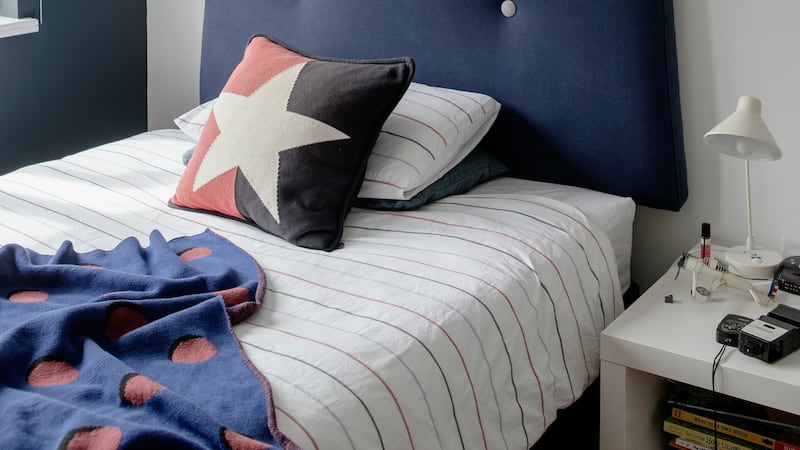Creating a child’s bedroom that also offers space for them to do homework and provide space where they can hang out with their friends; making a home office that can also be used as a place to exercise: these are precisely the kind of space conundrums many of our clients are now looking to solve. From how to reclaim unused space to choosing furniture, here are some ideas for creating greater flexibility in your home, inside and out.
Layout
Flexibility is the key to both future-proofing your home and making it work more efficiently. The best way to achieve greater flexibility is to make use of every inch of available space in your home. Areas such as understairs, landings and spare rooms often provide valuable space that can be put to good use.
Before you commit to altering any area of your home, think carefully about whether the location will allow you to create the right kind of environment for how you intend to use the space. I’ve seen beautifully designed home office areas in hallways under the stairs but am not convinced this is the best location for working from home. Additional storage, a guest toilet or even a utility might be a better use of understairs space, for example.
Furniture
When shopping for furniture, try to avoid buying anything too specific. This is especially tempting when decorating children’s rooms. Branded furniture or items with toys written on them, for example, will have a short life span, meaning over time you will find your house becomes filled with redundant furniture. Instead, opt for pieces that could be used elsewhere in the home should you update the room at a later stage.

Other than particular items like a bed or sofa, ask yourself if you can use the piece in multiple ways. This is something that fashion stylist and personal shopper at Brown Thomas, Angie Daly, advocates when it comes to clothes. How many ways can you wear it, she asks. “Always buy pieces you can multipurpose,” she advises. Apply this same rule when purchasing furniture. Maybe it’s a shelving unit that you need for a living room. Perhaps over time, you could relocate it to a kid’s bedroom for storing toys. Once the toys are outgrown, it could move to your home office.
Homewares
Buying things you can multipurpose is also a mantra of designer Helen James, whose Considered homewares range for Dunnes Stores is designed with flexibility in mind. James advocates buying less but being much more thoughtful about what we are buying. The Considered range is a carefully curated collection of homewares that are made to last and to be enjoyed every day.
“It’s about using your imagination and finding ways to multipurpose things,” says James. “Our homes need to be flexible. Choosing multifunctional pieces rather than more specific items will open up possibilities for ways to use different things throughout your home,” she says.
Other brands are embracing this idea of being less specific with their products. Silestone, typically known for its countertop materials, has launched Sunlit Days. Designed to expand the use of the material beyond the kitchen, the new range moves away from replicating stone and marble and uses a combination of colours that can be used anywhere in the home, from the bathroom to the living room. The only limit is our imagination.
Outdoors
And it’s not only inside our houses where flexibility is important. The same applies to the outdoors, adding flexibility in the way we approach garden design, moving away from fixed elements in favour of creating zones that serve multiple purposes in our gardens as our needs and lives change.
Our gardens have become more multifunctional in the past 18 months. “Our gardens should be able to accommodate our changing needs over time,” says garden designer Leonie Cornelius. Cornelius recommends avoiding fixed or built-in features, and focusing instead on creating spaces that can adapt and change depending on how we want to use the garden.
Lighting designer Willie Duggan Jr suggests planning for flexibility when designing your outdoor space by including wiring in your garden to allow you to add lights in different locations in the future. He also recommends including a number of outdoor sockets. “There are more and more portable light fittings coming on the market now that can be plugged in,” he explains. From illuminated furniture to large light fittings and sculptural pieces, these can be positioned anywhere in your garden and can completely transform the function and look of the space. “All you need is a plug socket,” he says.
There are also lots of very attractive rechargeable portable light fittings available now. They are designed for outdoor use but can also be used anywhere in your home making them the ultimate flexible light fitting.
[ @optimisedesign ]











